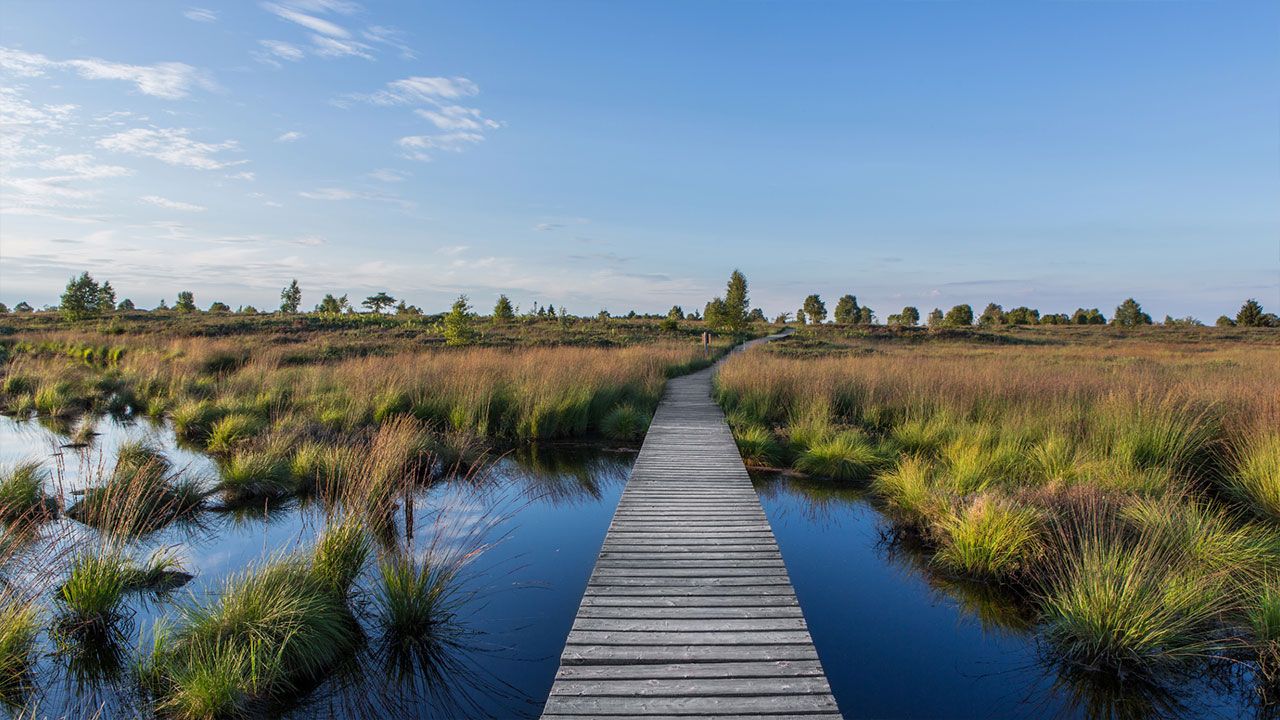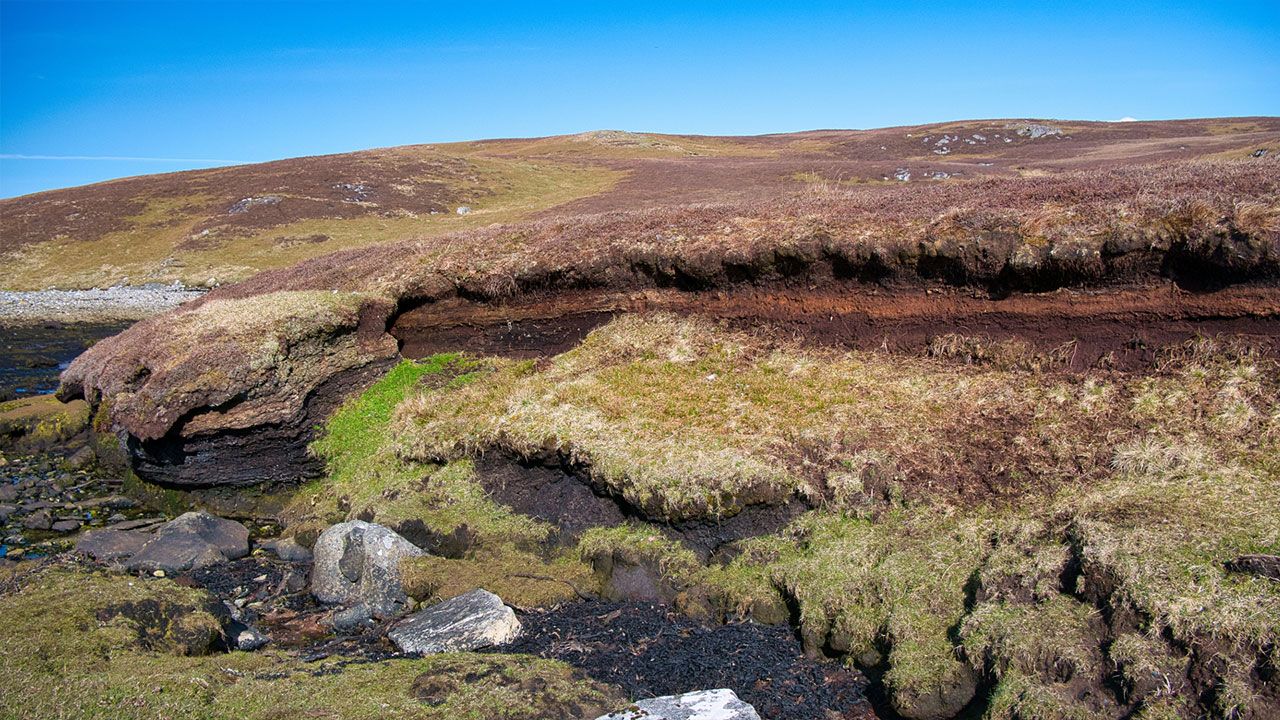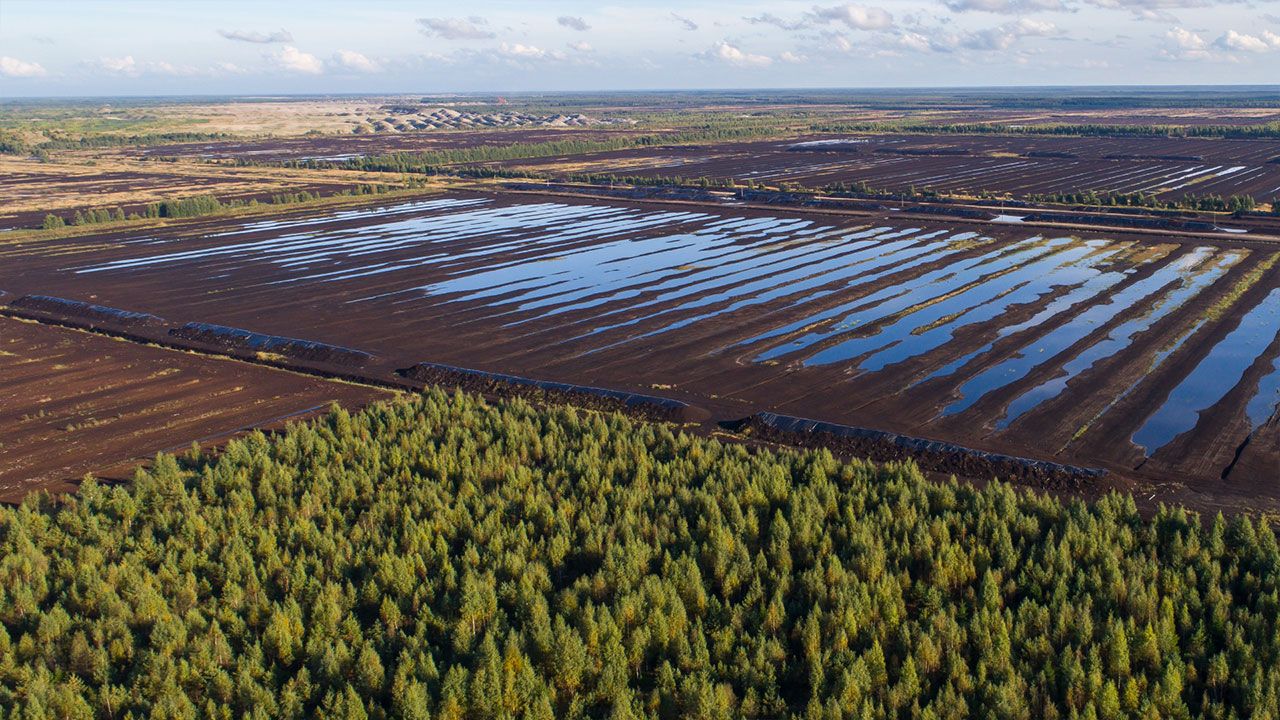Five Freshwater Facts on Peatlands
Mar 18
/
Aldert Brink

Peatlands are a kind of wetland ecosystem that play a vital role in mitigating climate change. Imagine a spongy, mossy landscape where plants grow in soggy soil. That's a peatland! These are special wetlands where dead plants don't fully decompose because of the constant wetness. Instead, they pile up over thousands of years, forming a thick layer of dark, carbon-rich soil called peat. Peatlands hold a surprising secret: they store more carbon than all the world's forests combined! This makes them vital role players in the fight against climate change. Here are 5 freshwater facts on peatlands:
1. A type of wetland characterised by the slow accumulation of peat

Peatlands are characterised by waterlogged conditions that slow down the decomposition of organic matter. This slow decomposition leads to the accumulation of partially decayed plant material, primarily mosses and other vegetation, forming peat. Peat accumulation occurs at a remarkably slow rate, typically less than one millimeter per year, although rates can vary depending on factors such as climate, vegetation type, and hydrology.
2. Peatlands act as vast carbon sinks

Peatlands act as giant carbon sinks. As organic matter accumulates in these waterlogged environments, it captures atmospheric carbon through photosynthesis. However, slow decomposition allows this captured carbon to be stored in the peat, rather than released back into the atmosphere as carbon dioxide. This long-term storage makes peatlands the most effective carbon sinks on land.
3. Small but powerful.

Despite their immense carbon storage capacity, peatlands are a relatively rare ecosystem, covering only about 3% of the Earth's land surface. This seemingly small area belies their incredible power. Their limited area makes their protection even more crucial to ensure we don't lose these vital carbon champions.
4. Peatlands play a crucial role in mitigating climate change

Imagine fitting the carbon storage capacity of all the world's forests into a landmass just a fraction of their size – that's the impressive feat of peatlands! Peatlands store approximately twice as much carbon as all the world's forests combined. Because of their slow accumulation rate and their ability to store carbon over long periods, they help to offset the carbon dioxide emissions that contribute to global warming.
5. Conservation of peatlands is of utmost importance

Despite their importance as carbon stores, peatlands are vulnerable to degradation due to drainage, land conversion, and peat extraction for agriculture, forestry, and fuel. When peatlands are drained or disturbed, the stored carbon can be released into the atmosphere as carbon dioxide, contributing to greenhouse gas emissions. Conservation measures such as rewetting drained peatlands, implementing sustainable land management practices, and preventing further degradation can help preserve the carbon stored in peatlands and maintain their role as valuable carbon sinks.
Protecting and restoring peatlands are essential for climate change mitigation, as maintaining intact peatlands prevents the release of stored carbon into the atmosphere and promotes continued carbon sequestration.
Case Study - Congo Peatlands

In a recent World Wide Fund for Nature (WWF) report titled "High Cost of Cheap Water: The True Value of Water and Freshwater Ecosystems to People and Planet" (October 2023), a case study examines the critical role of the Congo Basin's peatlands. This vast area, known as the world's largest tropical peatland complex, stores a staggering amount of carbon. Here's a synopsis of the key points, but for the full details and data, be sure to check out the WWF report.
Protecting the Congo Peatlands - A Carbon Powerhouse Under Threat
This case study highlights the critical role of the Congo Basin's peatlands, the world's largest tropical peatland complex, in storing vast amounts of carbon.
Key Points:
This case study highlights the critical role of the Congo Basin's peatlands, the world's largest tropical peatland complex, in storing vast amounts of carbon.
-
The Congo peatlands store nearly 30 billion tons of carbon, equivalent to three years of global greenhouse gas emissions.
-
Despite covering only 5% of the basin, they hold as much carbon as the entire Congo rainforest.
-
These wetlands are currently under threat from:
- Climate change causing water scarcity and drying.
- Government concessions for activities like logging, agriculture, mining, and oil & gas exploration.
Taking Action:
Degraded peatlands release significant CO2 emissions, accelerating climate change.
Consequences of Degradation:
-
Mapping peatlands and their carbon stocks is crucial for informing environmental decisions.
-
Effective governance frameworks are needed to enforce regulations and protect peatlands.
-
Engaging and supporting local communities is vital for sustainable management.
Source:
Empty space, drag to resize
More stories on Freshwater:
Empty space, drag to resize
Join the conversation
Follow us on Facebook or Instagram for more Stories of Water.
Empty space, drag to resize
Who we are
A community of water warriors, working together to raise water awareness, saving every drop and together, aiming for surplus water in South Africa.
Get in touch
-
South Africa, Earth :)
-
droppie@surpluswater2025.com
#SurplusWater2025 Copyright © 2025
